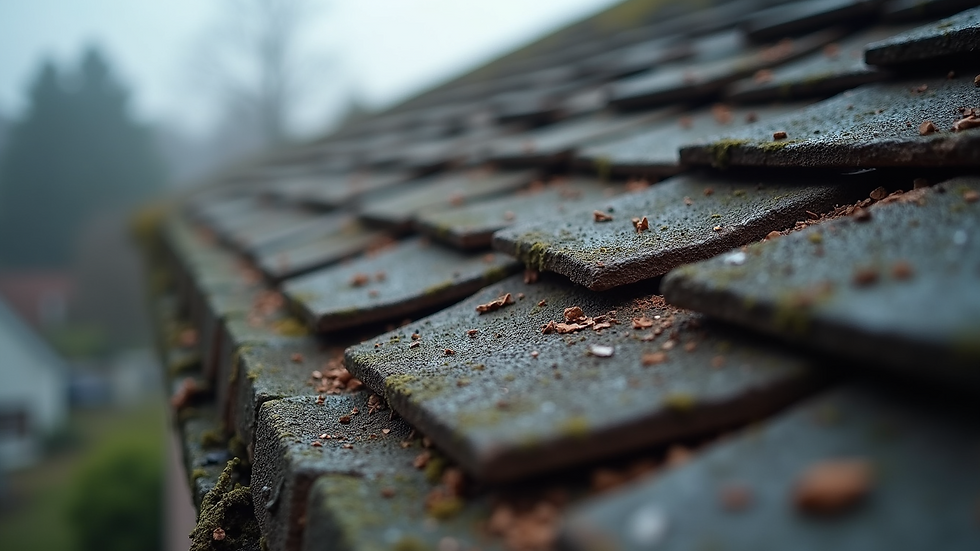How to Protect Your Roof from Damage
- Endless Summer Pressure Cleaning LLC
- Jun 19
- 3 min read
Your roof is your home's first line of defense against the elements. It’s essential to protect it from damage to maintain its integrity and extend its lifespan. In this blog post, we'll discuss effective strategies to safeguard your roof and keep it in top condition.
Understanding Roof Protection
Roof protection is vital for preventing costly repairs. Harsh weather, fallen branches, debris, and even mold can cause extensive damage over time. Regular maintenance and preventative measures can save you money and give you peace of mind.
Statistics show that roofs can last anywhere from 15 to 100 years, depending on the material and maintenance. One of the best ways to ensure longevity is through regular inspections and maintenance.

Routine Inspections and Maintenance
Inspecting your roof regularly is the first step in protection. Aim for at least two inspections a year—once in the spring and once in the fall. Look for:
Cracked, missing, or curling shingles
Rust and corrosion on metal roofs
Damage around chimneys and vents
Debris accumulation (leaves, branches, etc.)
If you notice any of these issues, address them immediately to prevent further damage. Early detection can save you from costly repair bills. Moreover, consider hiring a professional to conduct thorough inspections if you’re not comfortable doing it yourself.

Cleaning and Debris Removal
Maintaining a clean roof is critical in preventing buildup that can cause deterioration. Leaves, moss, and algae can retain moisture and lead to mold and rot. Regular cleaning is essential.
Consider using low pressure roof cleaning methods to keep your roof clean without damaging shingles or tiles. High-pressure washing can strip away protective granules and harm the materials. Instead, low-pressure methods involve using gentle cleaning solutions that are effective yet safe.
Additionally, remove debris from gutters and downspouts. Clogged gutters can lead to water backup, which may cause roofing materials to deteriorate and create leaks.

Protecting Your Roof from Weather Damage
Weather fluctuations pose a significant threat to your roof. Here’s how to protect your roof from various weather conditions:
Sunlight and Heat
UV rays can weather roofing materials over time. Here are some tips to minimize damage:
Apply reflective coatings, particularly if you have a flat or low-slope roof.
Maintain adequate ventilation and insulation to regulate temperature and prevent heat buildup.
Rain
Heavy rainfall can lead to leaks and water damage. To protect against this:
Ensure that all flashings and sealants are intact.
Inspect for any missing or damaged shingles that might allow water penetration.
Snow and Ice
In colder climates, snow and ice can accumulate on roofs, leading to ice dams. Here’s what you can do:
Regularly clear snow off your roof using a roof rake.
Ensure your attic is properly insulated to prevent heat from escaping and melting snow, which could refreeze at the eaves.
Wind
Strong winds can dislodge shingles and debris, leading to roof damage. To safeguard against wind:
Secure loose shingles and check for any signs of wear.
Trim trees near your house to prevent branches from falling on the roof.

Choosing the Right Roofing Material
The roofing material you choose can significantly affect the durability and protection of your roof. Some materials, like metal and slate, have longer lifespans and are more resistant to extreme weather compared to asphalt shingles. When reconsidering or upgrading your roof, here are options to consider:
Asphalt Shingles: Affordable but have a shorter lifespan (15-30 years).
Metal Roofing: Durable and energy-efficient, lasting 40-70 years.
Slate or Tile: Long-lasting (50+ years), but can be more expensive initially.
Make an informed choice that aligns with your climate and budget. Consult a roofing expert if needed to explore the best options for your home.
Final Thoughts on Roof Protection
Protecting your roof requires diligence, regular maintenance, and awareness of external elements. In summary, conduct regular inspections, clean your roof and gutters, maximize your roof's resistance to weather damage, and choose the right materials for your environment. By following these guidelines, you'll enhance the lifespan and effectiveness of your roof, ensuring it continues to protect your home for years to come. Remember, a well-maintained roof not only safeguards your home but also adds value to it.




Comments